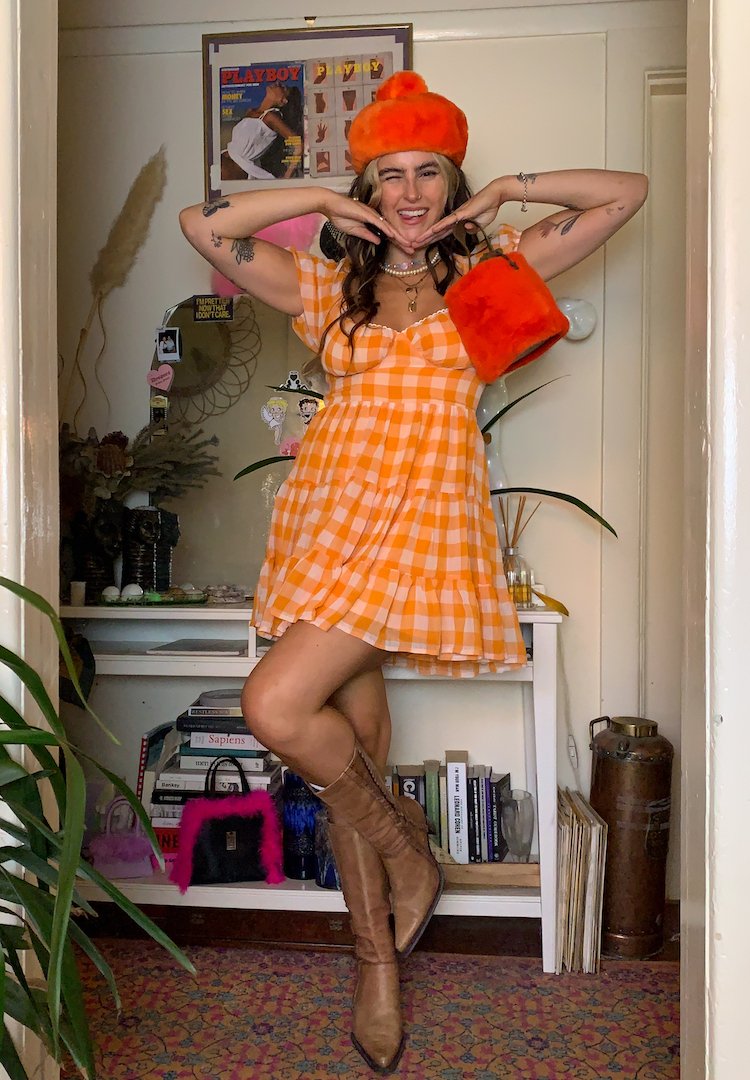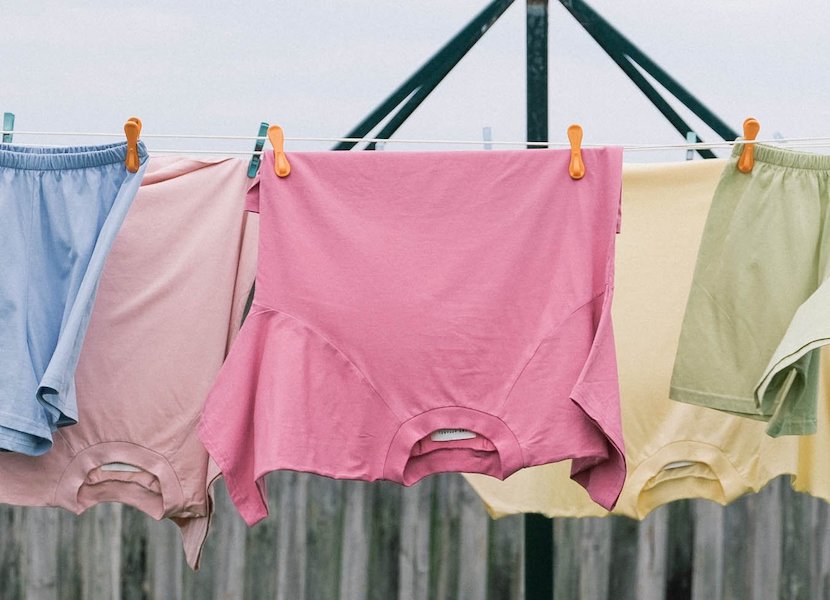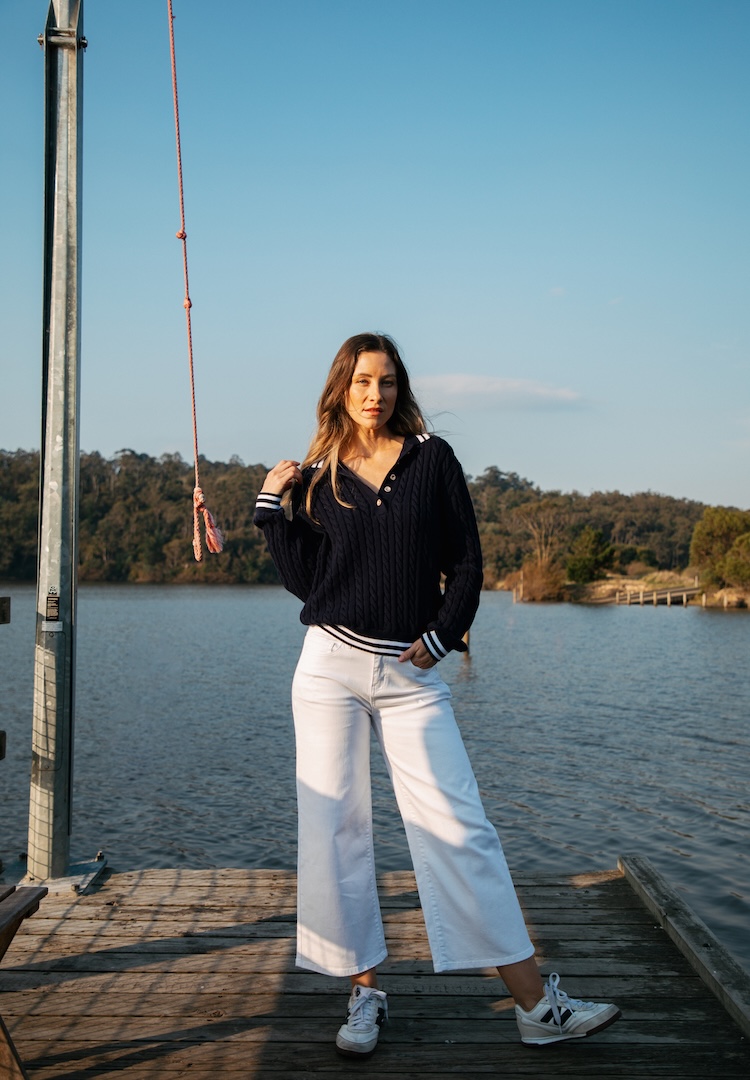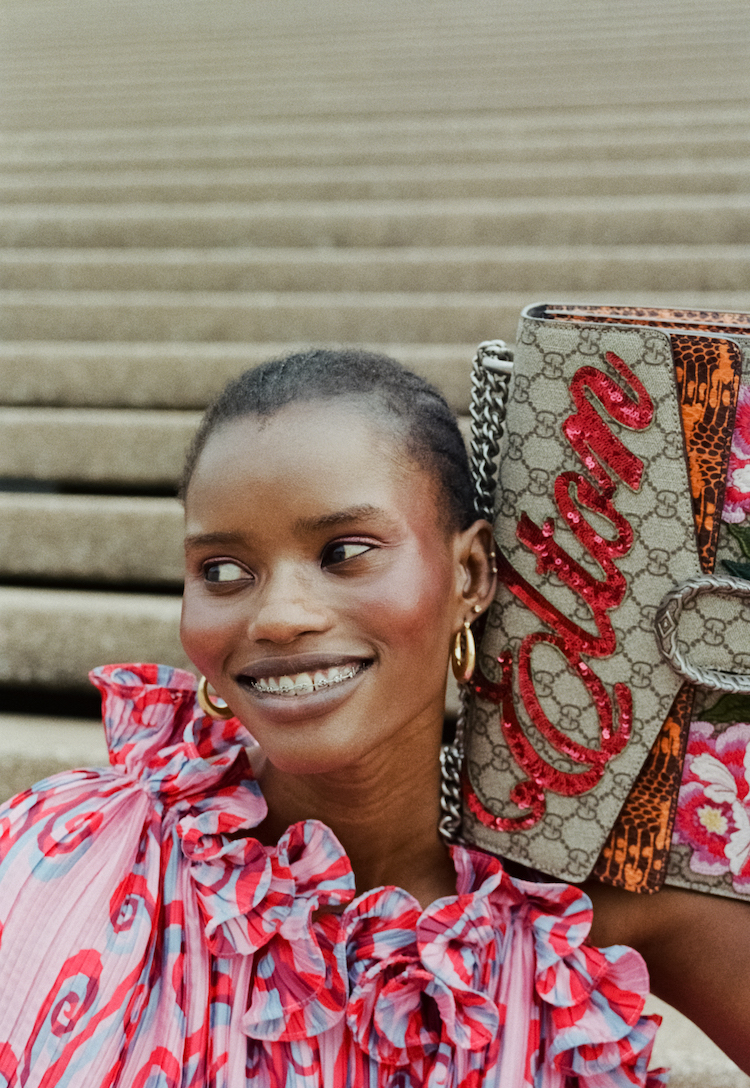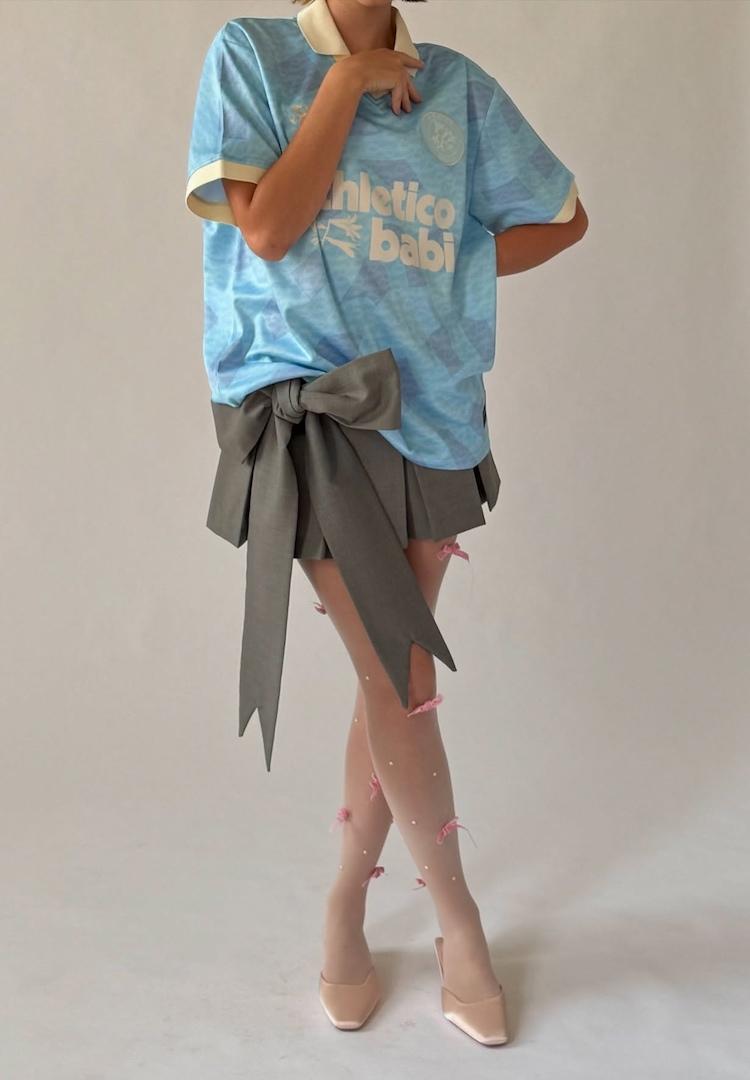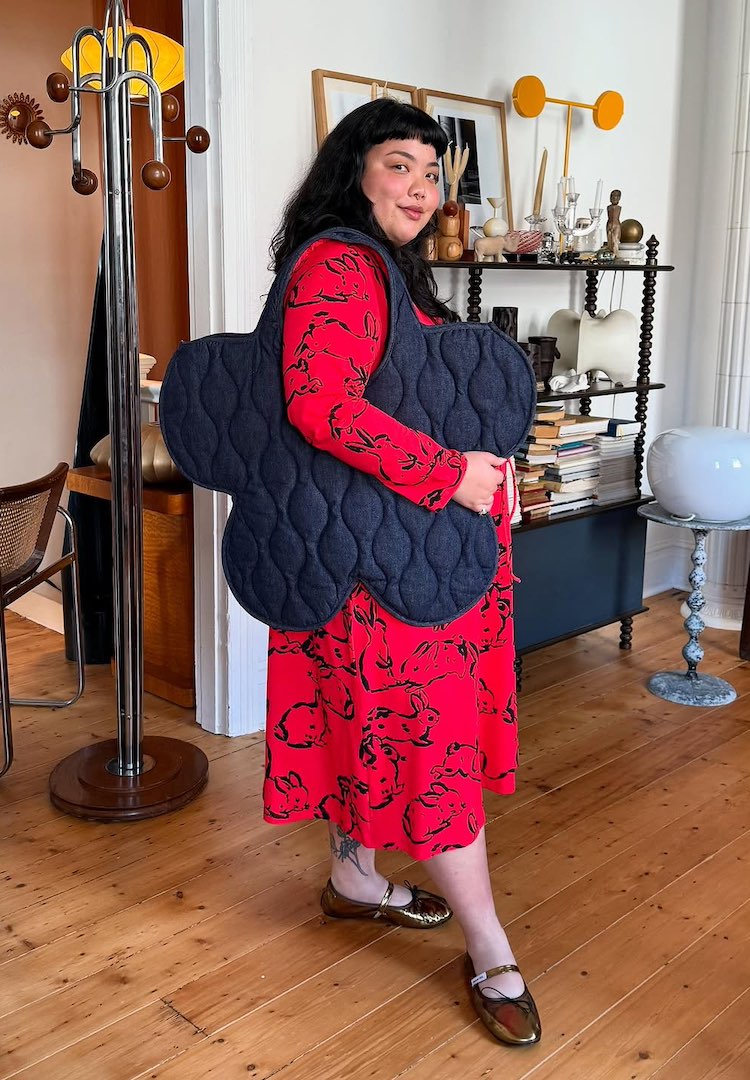Want to extend the shelf life of your fast fashion garments? Here’s how
IMAGE VIA FME APPAREL
WORDS BY JASMINE MAYHEAD
We’ve all got clothes. Here’s how to make them last.
Old, new, thrifted, hand-me-down, seen better days, made by me, and coffee-stained. I love all the clothes. As with any relationship, whether that be with a friend, a lover, or a tub of Halo Top Peanut Butter Chocolate ice cream, loving something means taking care of, nurturing, and cherishing until the end of your time together – which, in the case of the ice cream, is never very long.
As the founder of Ethical Made Easy – an ethical brand directory and online marketplace making it easy (ha) for consumers to shop more aligned with their own ethics and values – you could say that I’m pretty into ethics and sustainability.
Keep up to date with ethical Australian designers over at our Fashion section.
We carry this philosophy into the relationship we have with our clothing. We’re not the kind of gals to invest in a garment and chuck it in the bin when the colour turns a little beetroot-esque. And when you consider that 41 per cent of Australians have thrown unwanted clothes straight in the bin (those that admitted it to YouGov, anyway, but no judgement here), we thought to ourselves, ‘Why not write an article about extending the life of the garments that already exist in our wardrobe?’
When diving into all this sustainable fashion talk, it’s hard to not open your wardrobe (and your mind) without feeling a little pang of guilt. But why not use this feeling to inspire personal positive change? Instead of pulling all of your fast fashion purchases off the hangers in a dramatic, rom-com fashion, learn to appreciate the garments that have seen you through all the good times, and use a brand like eco-friendly laundry detergent brand The Dirt Company to say goodbye to those pesky pasta stains.
Wash properly
Yep, you heard us. No more throwing your towels in with your whites and hoping for the best. That is most definitely not a good way to prolong the life of the garments you already own. Oh, and you know that annoying tag on the inside bottom corner of your clothing? It’s time to actually read it.
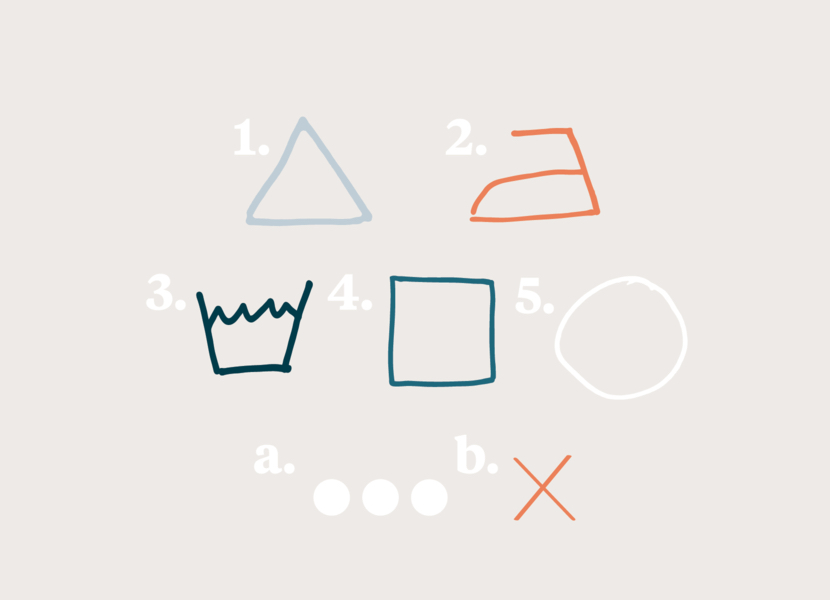
Illustration by The Dirt Company
Here’s a handy breakdown for you:
- The triangle signifies bleaching. If it has stripes through it, only use oxygen bleach/non-chlorine bleach. If it has an X through it? Don’t do it.
- The iron signifies ironing. Correspond the amount of dots on the individual garment label to the dot guide above, e.g. two dots = warm and X = do not iron.
- The crown-looking symbol signifies washing. No bar underneath means it can be washed on a normal cycle/cotton wash. One bar means a medium wash. Two bars mean a delicate/gentle cycle. A hand means a handwash. If there’s an X over it, then it’d be a good idea to have a favourite dry cleaner handy. If there’s a number in there, that usually indicates the temperature the garment can be washed in.
- The square signifies drying. Use the dots as a guide to the heat setting. If there is an X through it, forget it.
- The dots correlate with temperature. One dot is cool, two dots are warm, three dots are hot, and so on.
- The circle signifies dry cleaning. The letters inside it, if any, will be for your dry cleaner. If there’s an X through it, then no dry cleaning for that garment.
Remember these little tips, too:
- For clothes to actually wash properly, 40 degrees is the setting you want to use.
- Get to know your laundry detergent, because the chances are the one you picked up from the store is doing more harm than good. Opt for a more natural (but still just as good) detergent that is eco-friendly and nasty chemical-free.
- Hand wash and spot wash. Nope, this is not just something your grandma does on a Friday night. Hand washing your garments, as well as spot washing when you’ve had a spill or you’ve worn something but don’t feel you need to throw it in for a full wash, are two super easy, super good ways to prolong the life of your garments. Fill up your laundry sink, squirt some detergent in, soak the items a little bit, and gently rub the affected area. Be sure to read the tag on the individual garment, though.
Take care of stains
Stains are inevitable. A right of passage, if you will. From food (2am Maccas run) to blood (an inevitable reality of periods) to grass (fur baby – need we say more?), there’s no escaping the dreaded stains.
Remember when we talked about handwashing and spot washing? Use that knowledge in this context. As soon as you stain your clothing regardless of the cause or the colour, take care of it as soon as you can. Don’t let the stain stew on your garment, as this will make it harder to get out.
Learn to sew (kind of)
We’re not sewers, either. We’re amateurs at best. This is exactly why we partnered with DIY extraordinaire Maddy from The Essentials Club to bring you a complete beginner’s guide to mending your clothing, as well as a few simple mending tips you can use to prolong the life of your garments.
If there is a button that just keeps falling off, or a hole that just gets bigger every time you look at it, consider supporting a local clothes alterer. Have a cheeky Google for tailors around your area, and be sure to read all the reviews, ask all the questions, examine all their work, and consider all the things before you fully commit. If you want a bit more of a comprehensive guide to taking care of your clothing, we’ve done one for you: ‘The only ethical care guide you’ll ever need for your clothes’. Fitting, right?
Make the most of your clothes (and your friendship group)
The best way to make the most of the garments you already own is by actually wearing them. We know this sounds completely obvious, but when we consider the fact that we generally only wear 20 per cent of our closet 80 per cent of the time, stating the obvious becomes a little necessary.
If this shows us anything, it’s that it’s all well and good to have clothes dangling in our wardrobes, but if we’re not wearing them and loving them, we either need to consider if we are buying garments that adhere to our own personal style, look at what we’re pairing our existing clothes with, or call in the big guns.
By big guns, we mean wine, cheese and a group of your best girlfriends. Grab three pieces of clothing each (probably the ones that don’t really see the light of day), swap them with the pieces you know you will actually wear, and eat a regrettable amount of cheese while you’re at it.
It’s a win-win. For your friends and for yourself, a piece of each other’s pre-loved clothing is a new piece to have on rotation; a piece that has been loved, has been worn, and has a wonderful story attached to it. If it turns out that there’s a few garments leftover, consider recycling these old clothes. And if there’s some cheese and wine leftover, hmu.
We’re here to help!
When the time to buy new does come (because it 100 per cent will), consider using your consumer power to generate positive change by making a considered purchase. If you don’t know how to do this, where to start, or what the fast fashion we actually mean, use us. This is exactly what we do, and we’re here to help.
When you shop at our Ethical Made Easy Store you’re supporting local Australian and Kiwi brands that are actively setting tomorrow’s standard and are making the world a better place. Or when you support the change-making people and brands featured on our ethical brand directory, you’re using your transactions as actions to ask for a more environmentally and socially responsible fashion industry.
When the time comes and your favourite fast fashion piece falls apart, try to make a considered purchase next time you buy (if you can). Instead of immediately buying that somethin’ somethin’ your favourite influencer plugs on their socials, just consider whether or not you’ll wear that garment 30 times or more, and consider the cost per wear of that garment.
In its most basic form, the cost per wear describes the price you pay for a garment, divided by the number of times you wear it. For example, if you bought a garment for $100, and wore it four times, that garment cost you $25 each time you wore it.
We hope that this little guide/checklist/ramble helps you to extend the shelf life of your fast fashion garments, and all garments for that matter. As long as you’re washing your garments properly, taking care of stains when they occur, mending your garments or letting someone else do it for you and actually wearing your existing garments, then the garments you’ve already got on those coat hangers will be hanging there for a long time to come.
Washing your clothes has never been more sexy. Trust us.

